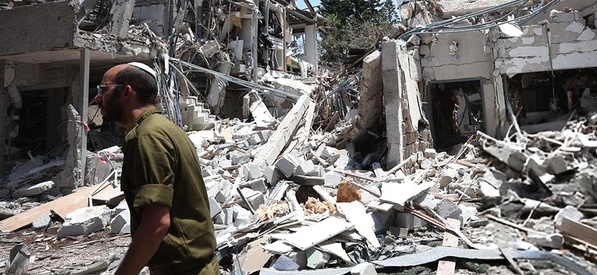SAEDNEWS: Media data and international media reports lead the audience to the reasons that have forced the Zionist regime to agree to a ceasefire.

SAEDNEWS: On the twelfth day of the direct confrontation between Iran and the Zionist regime, the battlefield is no longer limited to missile exchanges and drone attacks. What currently determines the fate of this confrontation is the level of "social endurance" and "psychological resilience" of the two societies involved in the war; a question whose answer, contrary to the assumptions and predictions of Western officials, clearly favors Iran.

Tehran: Calm, active, and united
Field reports from Tehran, based on both domestic and international sources, indicate that life continues as usual. Cinemas are operating at high capacity, music and theater halls are lit up at night, and cinema ticket sales in the past two days have exceeded 5,000 in Tehran.
The Public Relations Director of the Cinema Organization announced that due to audience demand, the number of showings and cinema halls screening films will increase this week.

Tel Aviv: Anxiety, disruption of daily life, psychological fracture
On the other side of the battlefield, what has leaked out from the occupied territories is above all the image of an anxious and restless society. Iranian missile attacks on Tel Aviv, Be’er Sheva, Haifa, and several other areas have deeply shocked Israeli society; according to The Guardian, these attacks have disrupted life in the occupied territories. The media outlet reports that nearly 10 days ago all recreational activities in the Zionist regime were suspended. The Guardian adds that this situation emerged during days when many tourists had traveled to various cities in the occupied territories to enjoy holidays and are now “trapped in Israel’s prison.”
In its field report from Tel Aviv, The Guardian wrote: “More than homes being destroyed, the rhythm of life has collapsed. Citizens go to shelters several times a day.”

The Israeli Home Front Command, in an unprecedented move, has ordered the closure of all cinemas, theaters, cultural centers, and public gatherings.
A user from Israeli residents wrote on social media: “There is currently a demonstration in Tel Aviv demanding the government stop the war with Iran. The slogan is ‘We have lost our homes and loved ones. We are homeless.’”

“Real missile” or “real fear”?
Western analysts, including Richard Haas in a recent Foreign Affairs article, emphasized that “confrontation with a country like Iran — which has a governmental structure and a real missile system — is fundamentally different for Israel from previous battles with Hamas or the Houthis.”
This analysis is also reflected in statements from Israeli citizens. The Guardian quotes a 34-year-old woman in Tel Aviv saying, “Until today, and in all of Israel’s wars, there wasn’t this much fear. But now buildings collapse, and every night I think: maybe it will be my turn.”
Meanwhile, on Valiasr Street in Tehran, people are celebrating the Revolutionary Guards’ attack on the US base in Qatar.

Which side can no longer endure?
The military war is ongoing, but the war of narratives has already reached a conclusion. Israeli society has worn down before its government, public trust has weakened, and the sense of security has collapsed. In contrast, Iran has maintained a high level of social cohesion.

